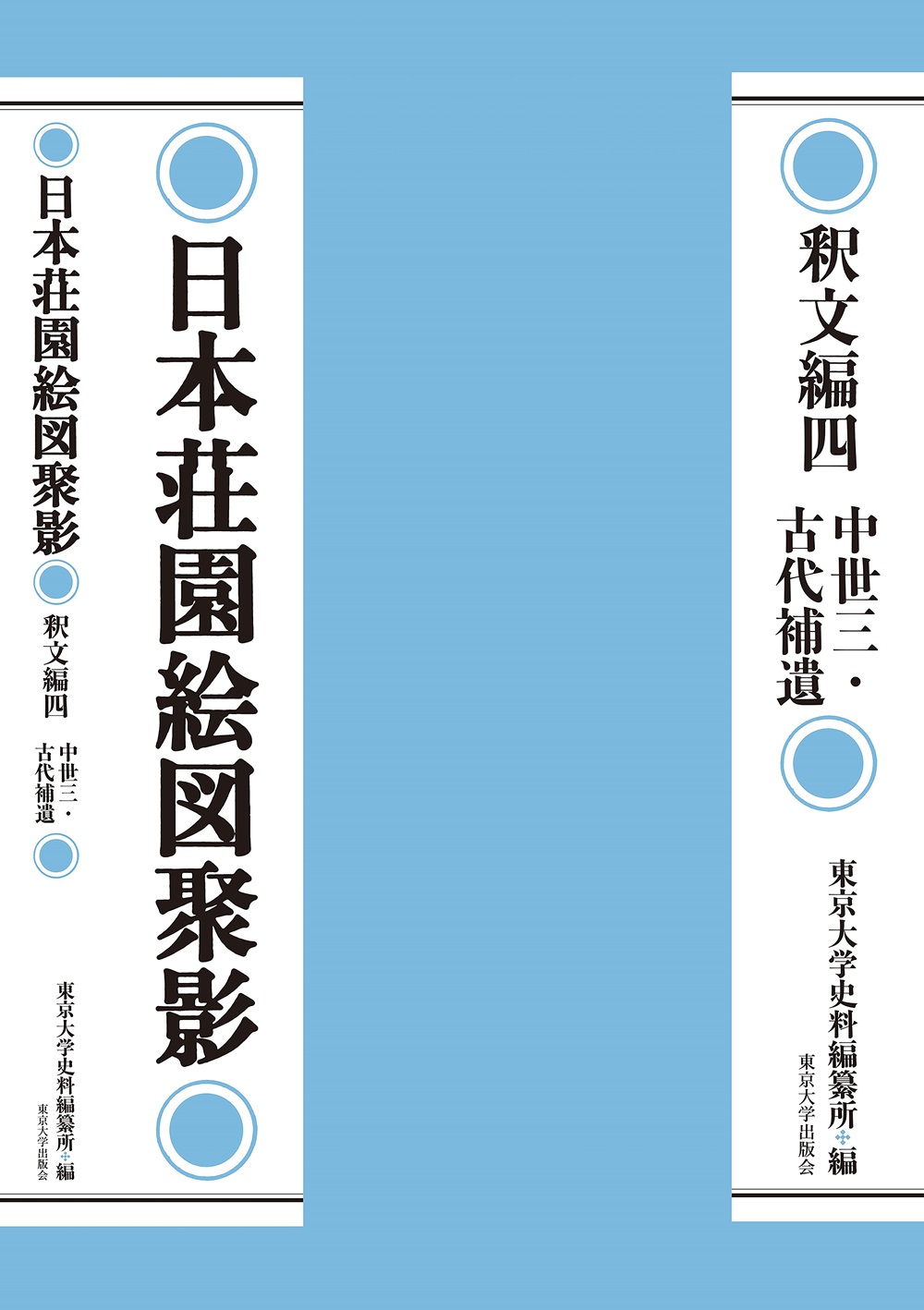
Title
Shakumon (Traces and Annotations) Editions Vol. 4 Nihon Shōen Ezu Shūei (Shoen ezu: collected maps of Japanese estates of the ancient and medieval eras)
Size
330 pages
Language
Japanese
Released
April 19, 2024
ISBN
978-4-13-092830-4
Published by
University of Tokyo Press
Book Info
See Book Availability at Library
Nihon Shōen Ezu Shūei Vol. 4 Nihon Shōen Ezu Shūei Vol. 4 [Main Part] Nihon Shōen Ezu Shūei Vol. 4 [Commentary]
Japanese Page
The Historiographical Institute has long been engaged in the field of historical geography, starting in 1890, when the regional geography compilation project operated by the Ministry of Home Affairs was moved alongside its collections to the Imperial University. The Nihon Shōen Ezu Shūei series collects old maps from the ancient and medieval periods and presents them in large scale. The first volume of the main series was published in 1988, and the seventh and final volume in 2002. The maps are held in A3-sized cases, and many are newly shot photographs. Larger maps are printed on A2 plates and folded in half. In cases where the original item is particularly large, the photograph has been printed across multiple plates. For the purposes of consistency, the main photographs are printed in monochrome using a precise method of printing known as collotype, while separate color prints are made for images that contain coloring. The maps require a wide table to be properly viewed and are consequently a little difficult to use, but they are nonetheless a fundamental resource for researchers.
The series contains around three hundred different maps which can be broadly split into two groups. The first are maps that survive within the collections of Shōsōin originating from the Nara period, and the second are medieval estate maps (shōen ezu), extant versions of which date back as far as the twelfth century. The term “shōen” refers to a system of land management, and we have defined “shōen ezu” to broadly refer to diagrams that provide information regarding the control and use of land (this does not include maps that show only the grounds of temples and shrines or narrow plans of individual properties or buildings). The number of maps remaining from eighth- to sixteenth-century Japan is remarkable even on a global level, and Japanese students might be familiar with some major examples from their school textbooks, such as the formation of the shōen system in the Insei period or the practice of land partition in the Kamakura period.
Following the publication of the illustrated volumes, the shakumon editions began publication in 2007 with the volume for the ancient period. This was followed by the publication of three more volumes for the medieval period. These volumes include black-and-white traces of each map printed on A3 paper, with annotations from the original reproduced in printed type. Additionally, an A4 commentary booklet is included which provides fundamental information on which map. The booklet also provides scaled down versions of each of the traced maps, allowing the reader an easy overview of the materials. Although the abundance of remaining maps differs by region, there remain a wide variety of estate maps from a wide range of areas across Japan. As this series is first and foremost a collection of historical sources, it makes no claims to be compact or reader-friendly, but it provides comprehensive bibliographies which serve as a useful point of departure for further research.
The maps collected by this series offer us the chance to rediscover scenery from hundreds of years ago. Some of the maps even allow us to stand where their creators might have stood and reimagine images from the past. Rapid improvements in the availability of online geographic information are also of much help, with easy access to old arial photographs allowing us to see how the land looked before the large-scale changes brought on by the post-war period of rapid growth. Guided by these tools and a careful analysis of extant maps, it might be possible to reconstruct the environments of even those regions for which maps do not remain.
(Written by FUJIWARA Shigeo (translated by George Wollaston), Professor, Historiographical Institute / 2024)



 Find a book
Find a book

